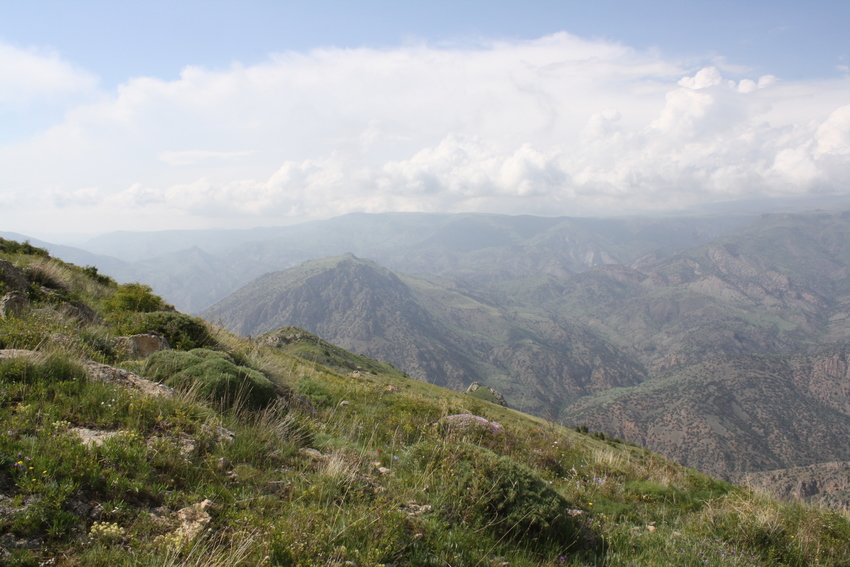
National Endangered Species Day is observed on the third Friday of May every year to spread awareness about the importance of protecting endangered species and their habitats.
At World Land Trust (WLT) every day is Endangered Species Day, working with our 30 overseas conservation partners to protect habitats and their diversity of species. This year, as the 15th Endangered Species Day is upon us it is especially timely that we have just now received fantastic news from our partner, FPWC in Armenia about the small population of Caucasian (Persian) Leopards that survive in the Caucasus Wildlife Refuge which they protect.
This news was reported to us by Vicky Mkrtchyan, Environmental Projects Coordinator for FPWC, who emailed to say:
“For the second time WWF has captured camera trap footage of a leopard that we at FPWC have been tracking. The first time this happened was when they filmed ‘our’ three-legged hero which we first recorded on trail camera in 2013. Since then we have had glimpses of this leopard but were thrilled to know that WWF Azerbaijani recorded it last year in Nakhichevan, some 150 km away! This was wonderful news for us as we were concerned that, with only three legs, the leopard would struggle to survive. Happily photography showed that it was healthy and perfectly able to fend for itself.

“And now we have some more thrilling news that another leopard previously filmed by us in Ararat province is the same one filmed by WWF recently in Yenokavan, which is a northern village in Armenia’s Tavush province. This was doubly remarkable because there had been no previous signs of leopard in Armenia’s northern province since the 1970s, when they were exterminated.
“As Ruben (Khachatryan) and Keeper of the Wild, Boris (Vanyan) suspected, it was the same leopard filmed by us in Ararat & Vayots Dzor at the end of 2019 and beginning of 2020. WWF announced on their Facebook page that they checked the spots of a leopard and it turned to be the same male! So we assume that the leopard has crossed half the country, starting from the Caucasus Wildlife Refuge in the south to the northern forests of Tavush in less than three months!
“The photographs below confirm, through the unique markings, that it is the same leopard and we are delighted that Armenia’s Prime Minister, Nikol Pashinyan posted this news on his social networks. In fact, Tavush region is the homeland of our Prime Minister so we hope this stimulates his interest in Armenia’s endangered species.”

Spot pattern analysis
So how can we be sure it is the same leopard? Just like human fingerprints, every leopard has a unique set of spots. From a distance, a different angle, or a blurred photograph it wouldn’t be possible to identify individuals with certainty, however, if you get clear, good quality photographs, taken from the same angle, then the arrangements of the spots can be studied for comparison. The trail camera images above show the groupings of this leopard’s unique spots. Scientists also study the arrangement of whisker spots on big cats as these too are unique to the animal.
About the Caucasus Wildlife Refuge
One of the world’s lesser known biodiversity hotspots, the Caucasus covers more than 500,000 square kilometres between the Caspian Sea and the Black Sea, and includes parts of Georgia, Armenia, Azerbaijan, Russia, Iran and Turkey. The region is home to a wealth of wildlife – including the Caucasian Leopard, Brown Bear, Grey Wolf and Bezoar Goat – and has a high level of endemism (particularly among plants), meaning many of the species that live here are found nowhere else on Earth. WLT also supports FPWC’s ranger team to tackle illegal poaching within the region through its Keepers of the Wild programme.

A view over the mountains of the Caucasus Wildlife Refuge, Armenia. Credit: WLT/Mary McEvoy
Ranger, Boris Vanyan, is one of the Keepers of the Wild funded through WLT by The Body Shop. He patrols part of the Caucasus Wildlife Refuge in Ararat region which is known locally as Leopard Canyon. Boris grew up in this rugged landscape as did his forefathers. A key role that Boris plays is to keep the trail cameras working and in 2019 he recorded 10 sightings. Leopards still live in Leopard Gorge and Boris is there to keep alert to track movements and keep them safe from hunters.
What you can do
You can support Boris and his fellow rangers in Armenia to protect the Caucasian Leopard and other threatened species in Armenia by contributing to our Keepers of the Wild appeal. Your donation will help rangers patrol and maintain this vital habitat.
